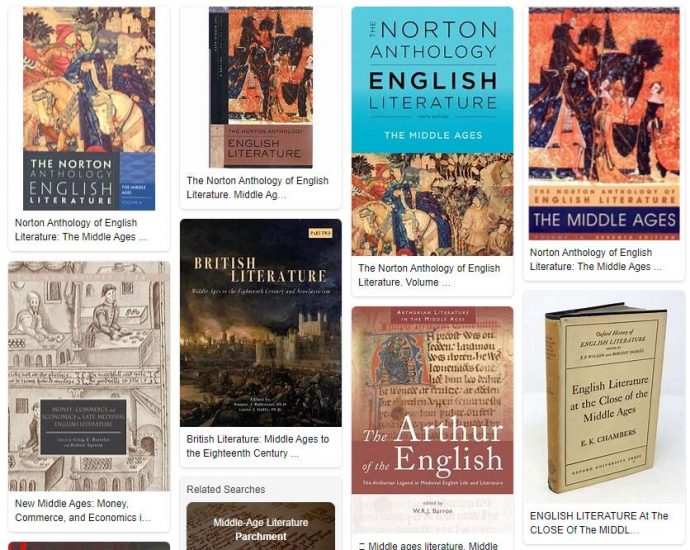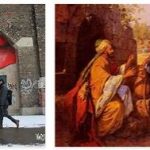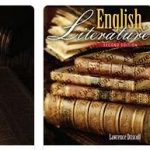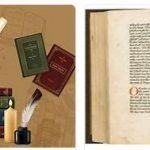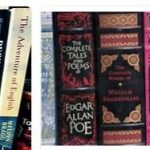
After the Norman conquest (1066), English as a literary language was largely supplanted by the French of the new Anglo- Norman ruling class; the language of the Church and of learning (e.g. at the universities of Oxford and Cambridge, founded in 1167 and 1209, respectively), however, remained Latin. Among the works in Latin, Geoffrey of Monmouth’s widespread chronicle “Historia regum Britanniae” (1137) deserves special mention, one of the main sources of the Arthurian legend. French-language literature was cultivated at and around the English court; In addition to courtly lyric poetry, there were above all versromances such as B. Benoît de Sainte-Mores “Roman de Troie” (1165).
According to healthinclude.com, the English-language literature, which was now primarily aimed at a lay audience, initially lived on in the provinces far from the court. B. in Peterborough continued to 1154; the most important religious edification books of the early 13th century, “Ancrene riwle” (instructions for anchors) and the texts of the so-called “Katherine group”, come from the Midlands; In a village in Worcestershire, Layamon wrote the alliterative verse romance Brut around 1200, which despite a French model,Waces “Roman de Brut” (1155), based on the tradition of Old English literature. English-language religious poetry and edification pamphlets have been handed down since the early 13th century, as have controversial dialogues such as “The owl and the nightingale” (approx. 1200) written by a southern English cleric. A collection of sermons, the so-called “Orrmulum” (1st half of the 13th century), is of great interest to language historians because of its original phonetic orthography. The entertainment served the often still submitted orally narrative poems (“Romances”), which abducted their audience into the unreal world of knightly adventures and courtly love. The focus was either on English heroes (“The matter of England”, e.g. “King Horn”, around 1250) or Arthur and the knights of his round table (“The matter of Britain”) or figures from antiquity (“The matter of Rome “). As the cultural language of the court and the upper class, English – now a “mixed language” made up of indigenous-Germanic, French and Latin elements – did not establish itself until the 14th century, when the upper class, which was separated from its continental possessions, became anglicized after the loss of Normandy in 1204 and a strong local middle class had emerged.
In the 14th century there was a unique flowering of English-language literature, which culminated in the works of G. Chaucer , W. Langlands , J. Gower and the so-called ” Gawain ” poet.
In central and northern England and in Scotland even the alliterative revival was revived. The anonymous Gawain poet used it in the verse romance “Sir Gawain and the green knight” (around 1375) and in the allegorical dream vision “Pearl” (after 1360), W. Langland in the allegorical poem “The vision of William concerning Piers the Plowman ”(three versions, around 1370, around 1377/79, after 1390), which at the same time paints a precise and satirical-realistic picture of contemporary England. In the SO, G. Chaucer, the most important Middle English poet, gave the language of London literary recognition. He initially oriented himself on French and Italian models (Dante , Petrarca , Boccaccio ); With thetragic love story “Troilus and Criseyde” (around 1385) setagainst the background of the Trojan War, he created a work that is still admired today for its complex psychological realism. In the 24 stories of the fragmentary “ The Canterbury tales ” (begun around 1387), G. Chaucer showedhis mastery not only in the mastery of the diverse medieval narrative forms, but also in the ability to observe the representatives of the to characterize different classes in an astute and differentiated manner.
Around the same time (around 1390) J. Gower’s English-language work »Confessio amantis« was created, a collection of 133 stories that, embedded in an allegorical framework, deal with the practice of courtly love. J. Gower’s other works, written in Latin and French, respectively, underscore the enduring importance of all three languages.
In the 15th century, leading authors continued to orientate themselves on G. Chaucer’s model. Of her poetry, which is often kept in a didactic tone, in addition to the works of T. Hoccleve, J. Lydgate’s Fürstenspiegel “The fall of princes” (1431–38) should be emphasized, in which he took up Boccaccio’s theme of the fall of high-ranking personalities. In Scotland, R. Henryson (“The testament of Cresseid”, before 1500), W. Dunbar , G. Douglas and D. Lyndsay continued the tradition of G. Chaucer independently into the 16th century.
In the prose of the 14th century, alongside translations from Latin or French (e.g. “The travels of Sir John Mandeville”, around 1356), religious edification literature still played an important role; she came from by descendants of European mysticism such as Richard Rolle († 1349), Walter Hilton († 1396) or Juliana von Norwich (around * 1342, after † 1416). In the last third of the 14th century was also created – in the context of the Lollard movement and edited by the church reformer J. Wycliffe (around * 1330, † 1384) – the first complete translation of the Bible into English. In the 15th century, T. Malory wrote the most important late medieval English prose story, “Le morte Darthur” (1460–70), a new comprehensive treatment of Arthurian material. After 1476, the introduction of printing by W. Caxton favored the emergence of a broad bourgeois lay public; it was also an essential step towards the standardization of English.
The medieval drama emerged from liturgical beginnings in the 12th century. In addition to »miracle« or »saints’ plays«, extensive series of dramas related to the history of salvation, the so-called » mystery plays «, were created in the 14th and 15th centuries. They were organized by the craftsmen’s guilds and performed on the streets and squares of cities on Corpus Christi until the 16th century. Only four of these cycles have survived: from Chester, York (both mid-14th century), Wakefield (late 14th century) and a city (Lincoln?) In the east of England (the so-called “Ludus Coventriae”, 15th century). In the allegorical morality games created in the 15th century (best known: » Everyman «, 1490/1500) personified virtues and vices wrestle for the soul of a figure representing humanity. Moralities were performed by professional actors; to that extent they represent a link to the “modern” Elizabethan and Jacobean theater, the roots of which are at least partly in the popular forms of late medieval drama.
